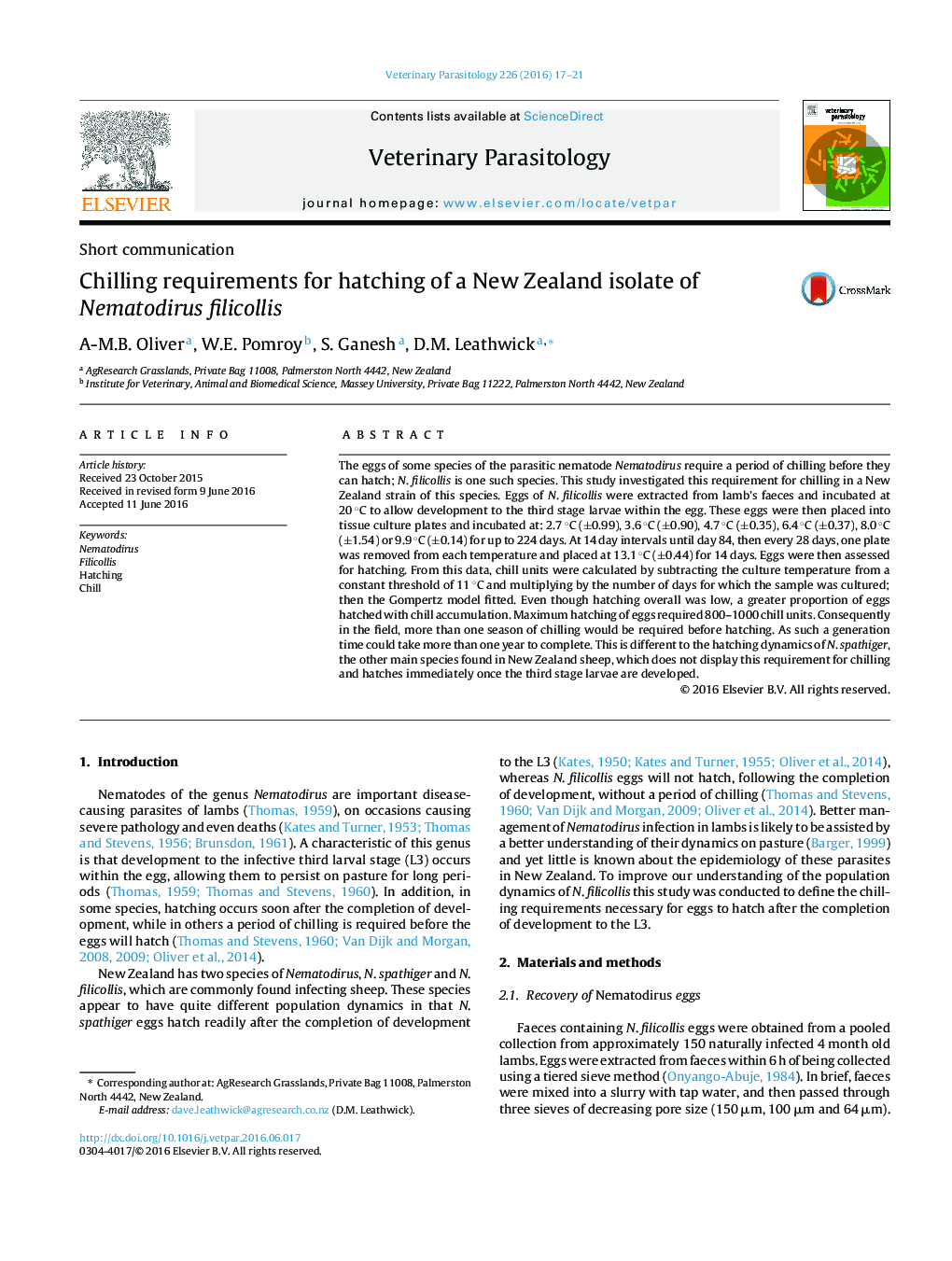| کد مقاله | کد نشریه | سال انتشار | مقاله انگلیسی | نسخه تمام متن |
|---|---|---|---|---|
| 5802039 | 1555650 | 2016 | 5 صفحه PDF | دانلود رایگان |
- Nematodirus filicollis eggs require chilling to hatch.
- Chill units were calculated as the length of storage at temperature below a development threshold of 11 °C.
- Egg hatch proportions were related to chill unit accumulation.
- N. filicollis eggs require 800-1000 chill units for maximum hatch.
- Generation time of N. filicollis could be greater than 1Â year for completion.
The eggs of some species of the parasitic nematode Nematodirus require a period of chilling before they can hatch; N. filicollis is one such species. This study investigated this requirement for chilling in a New Zealand strain of this species. Eggs of N. filicollis were extracted from lamb's faeces and incubated at 20 °C to allow development to the third stage larvae within the egg. These eggs were then placed into tissue culture plates and incubated at: 2.7 °C (±0.99), 3.6 °C (±0.90), 4.7 °C (±0.35), 6.4 °C (±0.37), 8.0 °C (±1.54) or 9.9 °C (±0.14) for up to 224 days. At 14 day intervals until day 84, then every 28 days, one plate was removed from each temperature and placed at 13.1 °C (±0.44) for 14 days. Eggs were then assessed for hatching. From this data, chill units were calculated by subtracting the culture temperature from a constant threshold of 11 °C and multiplying by the number of days for which the sample was cultured; then the Gompertz model fitted. Even though hatching overall was low, a greater proportion of eggs hatched with chill accumulation. Maximum hatching of eggs required 800-1000 chill units. Consequently in the field, more than one season of chilling would be required before hatching. As such a generation time could take more than one year to complete. This is different to the hatching dynamics of N. spathiger, the other main species found in New Zealand sheep, which does not display this requirement for chilling and hatches immediately once the third stage larvae are developed.
Journal: Veterinary Parasitology - Volume 226, 15 August 2016, Pages 17-21
